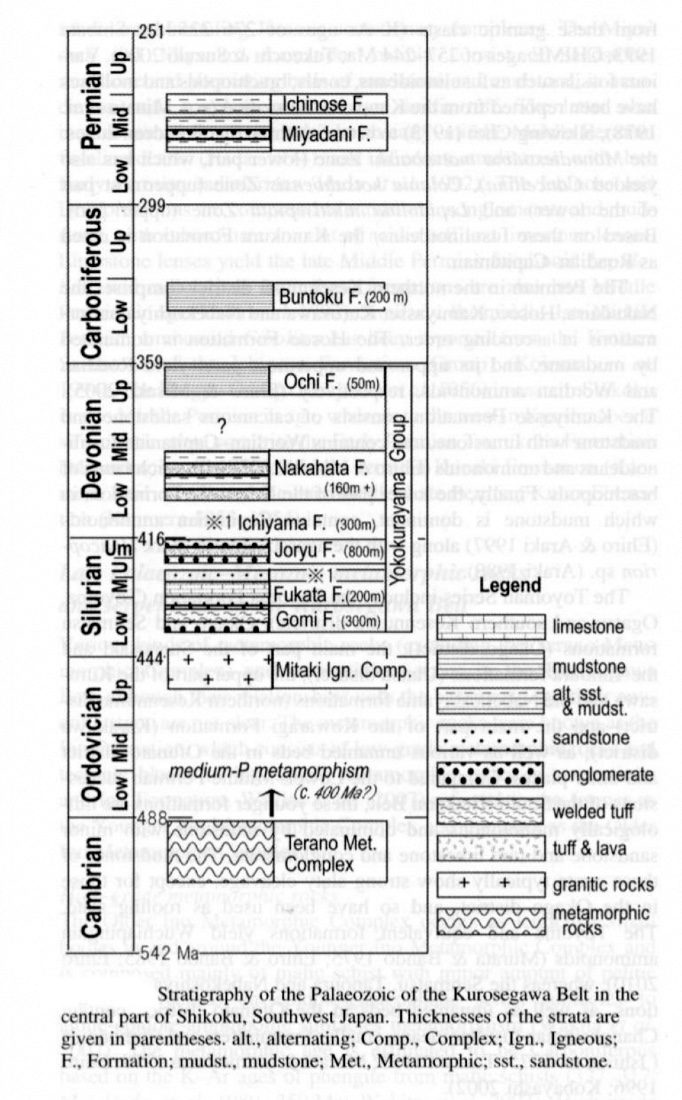Mitaki Igneous Complex Fm
Period:
Ordovician
Age Interval:
Late Ordovician (Katian), (15a)
Province:
Kurosegawa Belt- Shikoku
Type Locality and Naming
Kurosegawa Belt-central Shikoku
Synonym:
Lithology and Thickness
Granitic rocks. The Mitaki lithologies which include the Yokokurayama Granite (Yasui
1984) or Gomi Granite (Yoshikura 1985) are typically medium to coarse-grained, commonly sheared, calc-alkaline granitic rocks ranging from granite to diorite (mostIy granodiorite).
[Figure 1: Stratigraphy of the Paleozoic of the Kurosegawa Belt in the central part of Shikoku, Southwest Japan (after M. Ehiro et al., 2016)]
Lithology Pattern:
Granitic
Relationships and Distribution
Lower contact
Regionally, the schematic strat column indicates the next older unit as Terano Metamorphic Complex Fm
Upper contact
Regionally, the schematic strat column indicates the next younger unit as Gomi Fm
Regional extent
Kurosegawa Belt-central Shikoku
GeoJSON
null
Fossils
Age
Shown as Upper Ordovician, hence placed Base of Katian
Age Span:
Beginning stage:
Katian
Fraction up in beginning stage:
0.0
Beginning date (Ma):
452.75
Ending stage:
Katian
Fraction up in the ending stage:
1.0
Ending date (Ma):
445.21
Depositional setting
Depositional pattern:
Additional Information
Compiler:
Moreno, T., WALLIS, S., Kojima, T. & Gibbons, W. (Eds) 2016. The Geology of Japan. Geological Society. London. 1-24.
